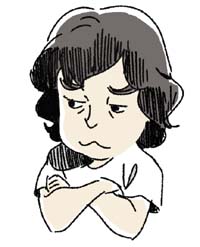Les 24 Chevaliers Part XXIV: Kazuhiro Furuhashi (Director) (03)
Welcome to the third part of our exclusive interview with director Kazuhiro Furuhashi.
Part XXIV (03)
Kazuhiro Furuhashi's In principio erat Verbum: "Realism (reprise)"
 | Kazuhiro Furuhashi Born on June 9, 1960. Director. He's known among anime fans worldwide for his TV series, Getbackers, Rurouni Kenshin, Hunter x Hunter, and Zipang. These works illuminated his realistic story structures and meticulously detailed rendering of the characters, which are also profoundly evident in Le Chevalier D'Eon. Furuhashi is currently working on his new series, Real Drive based on an original story by Shirow Masamune. |
PART 03: Making animation based on actual history
What was challenging for you in making an animation such as Le Chevalier D'Eon based on actual history?
I wanted to take it to the point where people would say, "this might have been what actually happened." Of course we needed to expand a little and add a few more episodes to get there. Because it would be difficult without a sound understanding of the world it portrays. You see it is quite unusual in the first place to have political upheavals in Russia, France and England, one after another. If we had emphasized this too much, the risk was in limiting the scope of the world the series is covering.
That means you have to portray everything realistically.
Exactly. But I felt we couldn't set up a realistic political drama within the framework of Le Chevalier D'Eon. If we did that, then we could end up using a narrative that's rigid and generalizing, which is not very attractive. That's not entertainment.
I think the audience is looking for life-size "persons." So by illustrating the mentality of Vorontsov and other characters that surround the protagonist, we made the story credible.
There are a lot of occult-like scenes in Le Chevalier D'Eon, for example, where D'Eon bears the soul of Lia and her memories flashback in D'Eon's mind. So, although we are talking about "realistic rendering," this is in fact a mixture of reality and occultism.
In animation, there is no much difference between hallucinations or psychic phenomena. I mean, they look the same because we use drawings in order to render them. For this reason, you must really render well to show the difference between, let's say, something that is actually happening and D'Eon's hallucination. We must always question ourselves on how we can accomplish the difference between hallucination and the reality as we produce an animation.
Let me give you an example. There is a scene where King Louis XV touches D'Eon's lips. I tried to incorporate that sort of bodily touch to make the scene look more real. By the way, that part was drawn by Saburo Mochizuki who did the storyboards. He really did a great job.
A realistic feel that could only be achieved by animation...
The "realistic feel" has been my theme for the past ten years.
And therefore, you obviously challenged this theme in Le Chevalier D'Eon, too.
Don't you think it's the most far-fetched idea to render a realistic presence to drawn parts? They do not smell or have the texture you can touch and feel. And I am trying to make them feel real in one way or another. This means the script has to be good and on top of that, we need to do a good rendering. I want to render the "weight of an object" or the "texture." For example, instead of showing the blood of Caron's foot tendon, we poked it briefly.
Yes, that looked really painful.
In films, especially in anime, with an exaggerated portrayal, you actually loose that "painfulness." I was in the staff of Urusei Yatsura as key animator, but the lightening strikes generated by Lum didn't look painful at all. This is because we'd never experienced an electrical shock. So even if a character gets his or her arm or leg severed, it would not have an impact on the audience who had not experienced it.
But if this person pinches a little hang nail and says, "When I did it before, I peeled a couple of centimeters of skin." At this smaller scale, people are forced to imagine the situation even though they don't have that exact experience and somehow they wish they could cry out, "stop it!" Put very simply, rendering of painful stories is more effective.

So you focused on visual images that the audience could easily identify with.
I think it is important how you convey the senses of smell, taste and texture, besides the more "obvious" senses of sight and hearing. I don't think you should give up because it's just a picture. I tried to render the uncomfortable horse carriage ride by showing the swinging feet and the line, "my butt hurts" as well as a hand rubbing it. This is a triple layered rendering to demonstrate the realistic sensation.
This imparts such a subtle impression compared to a live-action film. Same with the texture, we should do a steady step-by-step process by encouraging imagination, a small layer at a time without exaggerating. This is also true with designing characters. Although you can only do this for the serial works. Anyway I adapted "a slightly realistic" characters and renderings to reset the audience's sensation that's been paralyzed by an excess of flashy renderings.
(3 - to be continued)
© Tow Ubukata · Production I.G/Project Chevalier 2006

![WORK LIST[DETAILS]](/contents/works/design/images/left_title.gif)



 terms of use
terms of use